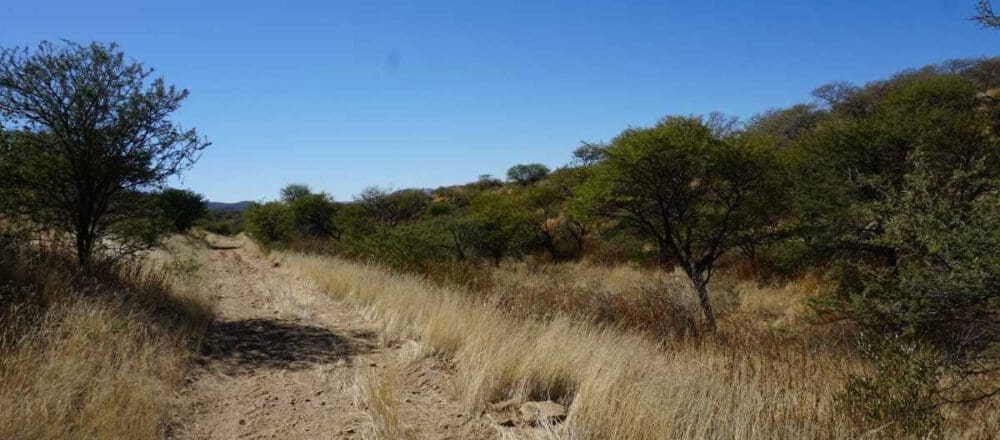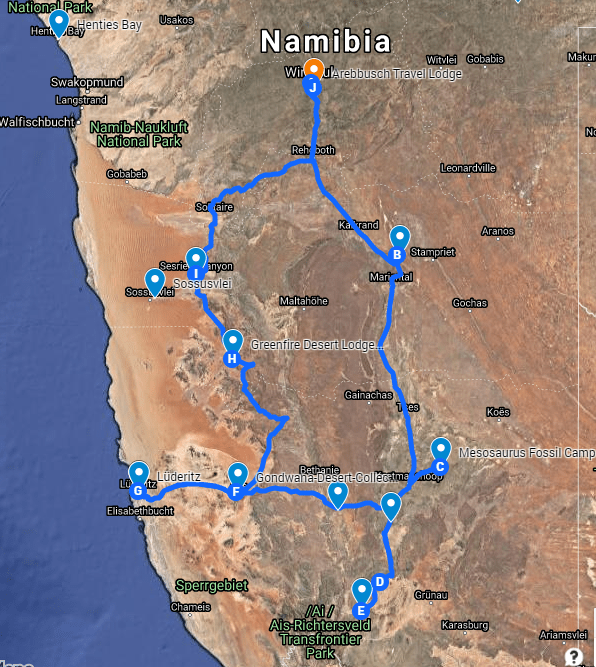
The journey continues towards Keetmanshoop
After a very nice start in the Kalahari, our route takes us further south. Near Keetmanshoop the next special features of southern Namibia are waiting for us. quiver trees, dolorite formations, as well as mesosaurus fossils unknown to us so far. In short, fascinating landscapes with exciting details awaited us here as well.
Mesosaurus Fossil Camp – the small all in one package
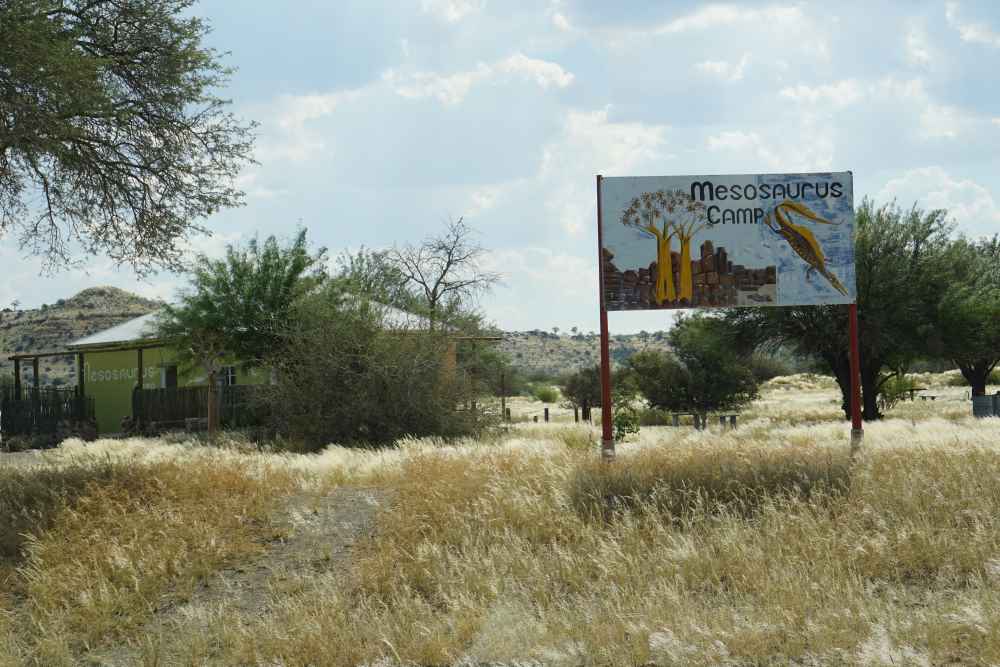
We (Sunna & Martin) love rustic and remote campsites. That’s exactly what Mesosaurus Fossil Campsite offers. Past the quiver tree forest and the Giants Playground, the path leads deeper into the bush. Already the reception exudes further bush charm. At the beginning there was no one to be seen, but after a few moments Hendrik, the operator of the lodge and campsite, approached us on his quad to receive us. Shortly thereafter, we were already on our way to Mesosaurus Bush Camp.
After a few more kilometers we reached the camp, completely deserted. The sites were simple and just to our liking. A large tree provides shade as well as space for huge Weaverbird nests. So direct animal entertainment is provided. Centrally positioned is a central sanitary building, fitting the charm of the place.
Hardly arrived and finished with the putting up camp, the next aha experience came in. Some time to perceive the surroundings in peace. We were in the middle of nowhere, surrounded by dolorite rock mountains and quiver trees. Always different formations and structures, hard to get enough of. So we decided to end the day comfortably with a walk through the area as well as a braai afterwards.
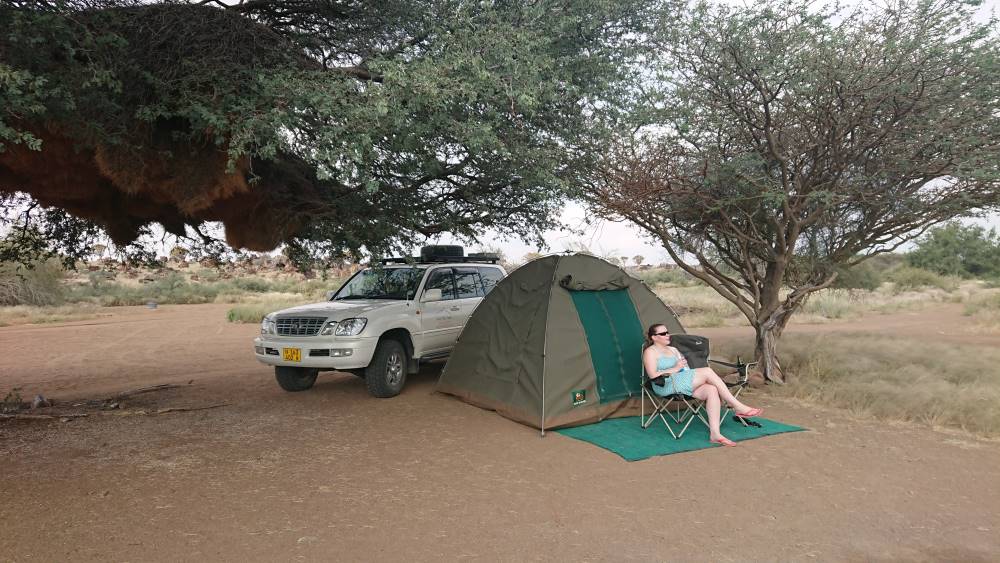
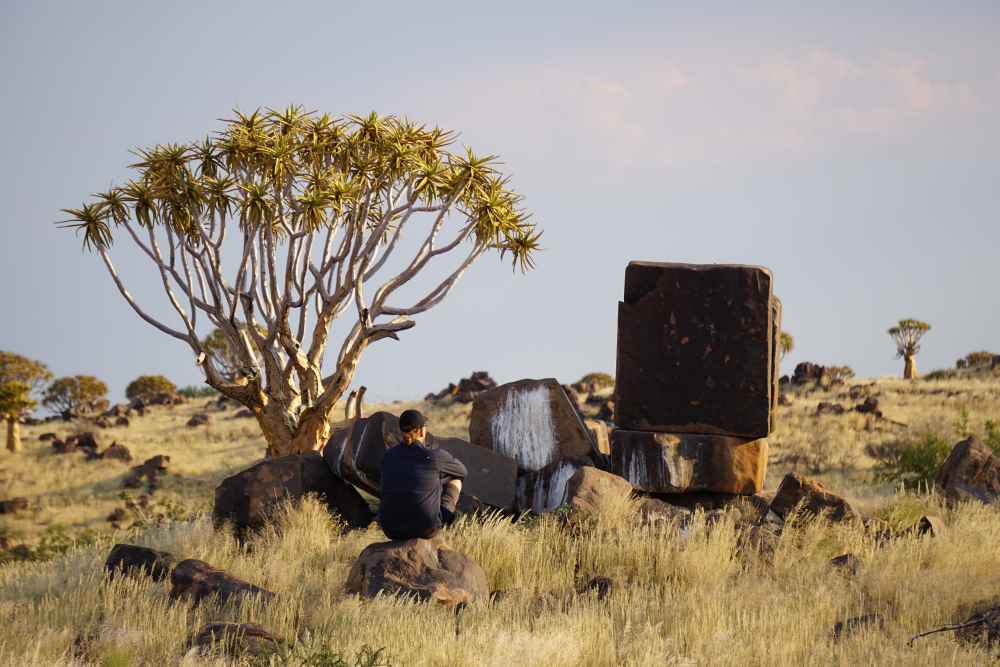
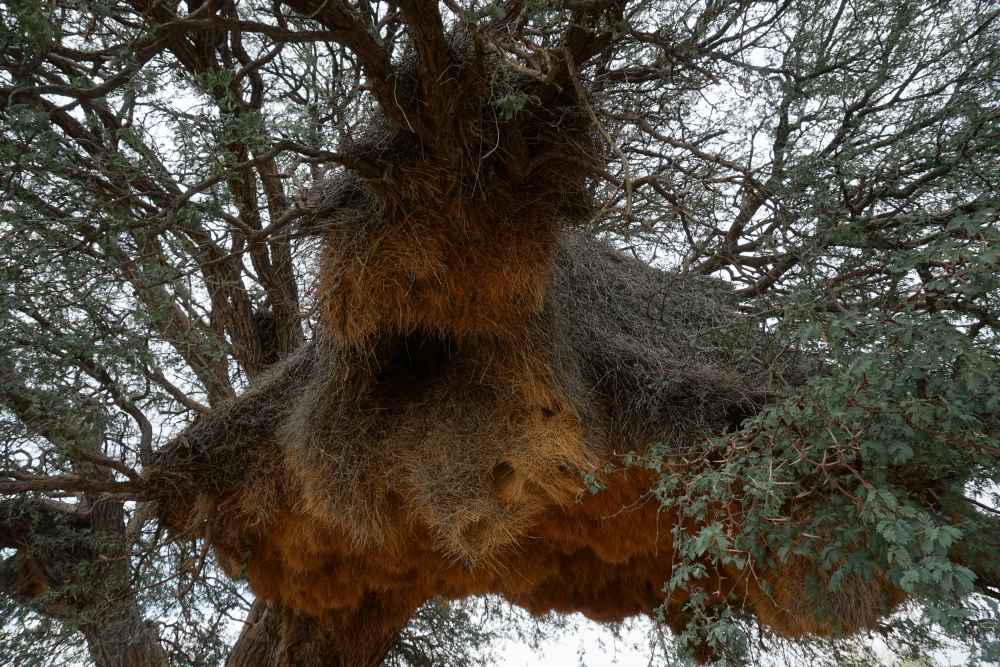
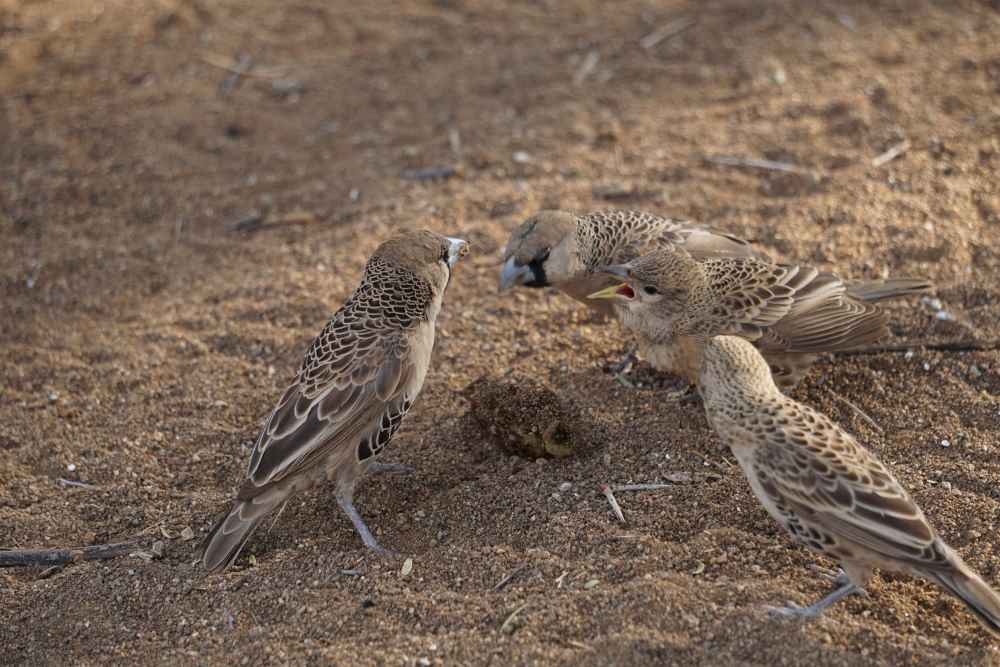
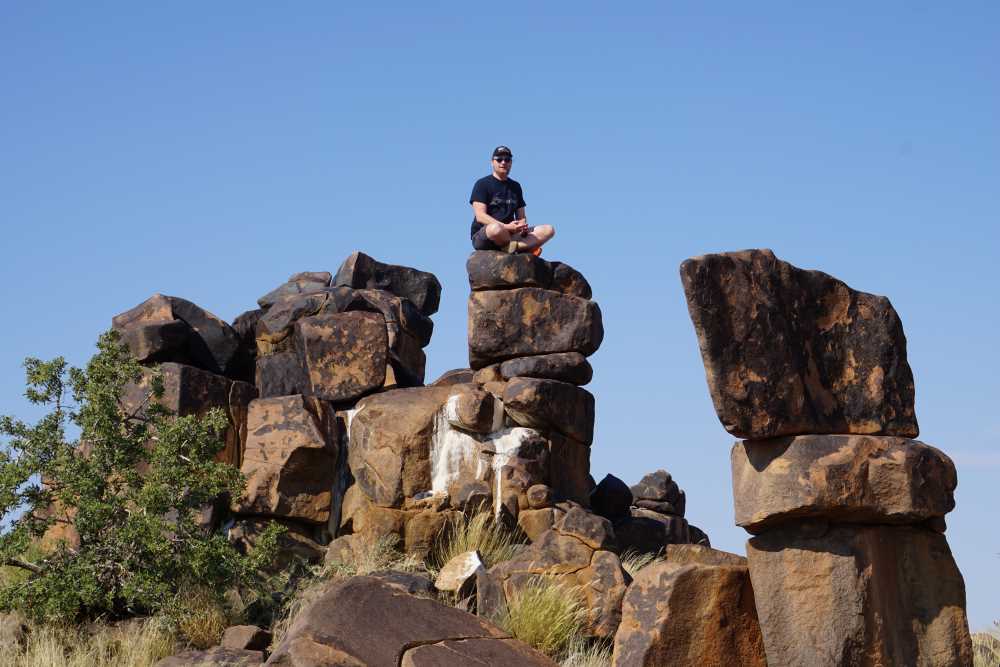
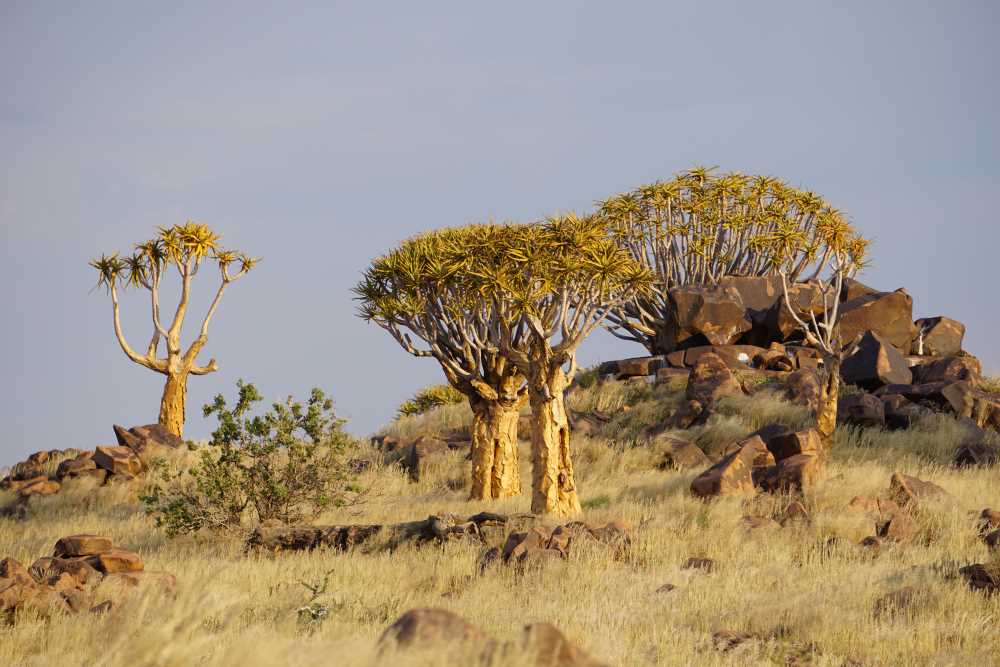
Searching for fossils with a fossil
Every morning and evening Gil, the owner of the farm, despite his almost 78 years, still personally offers the tour to the fossils. His credo is: With me you can say that you have seen fossils in the hand of a fossil. During the tour, Gil not only tells the story of the discovery of the Mesosaurus fossils, but also gives insights into the current state of research around the animals themselves. From time to time even foreign students come to continue the research and bring Gil up to date.
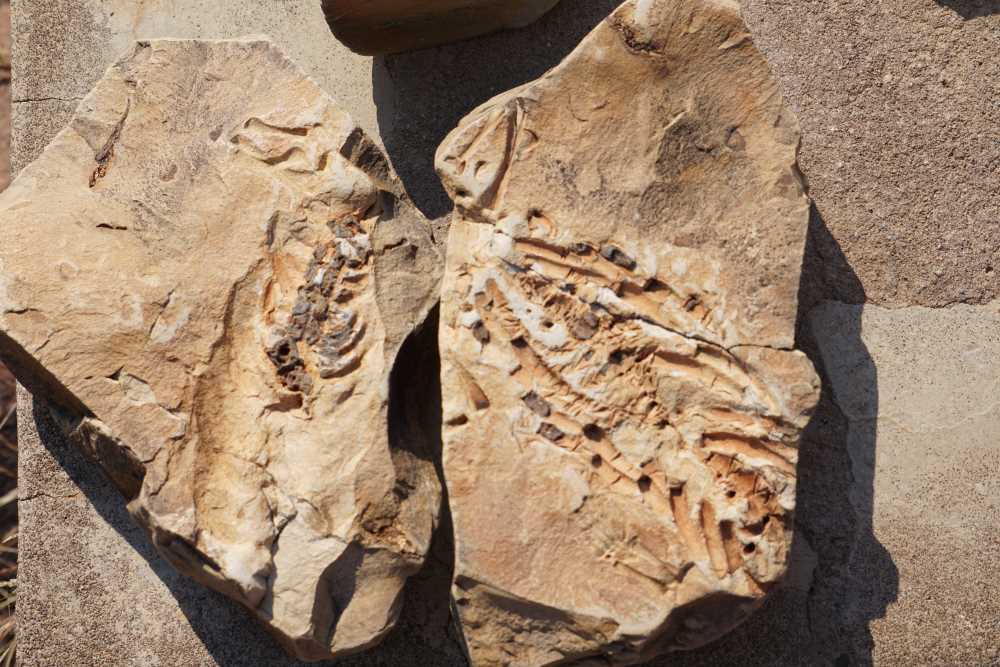
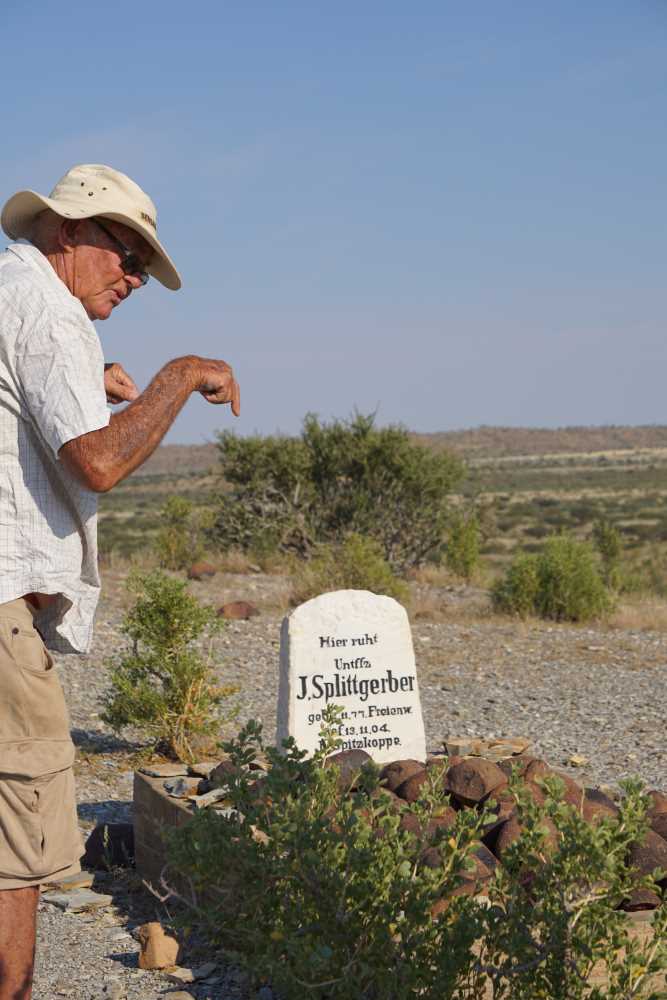
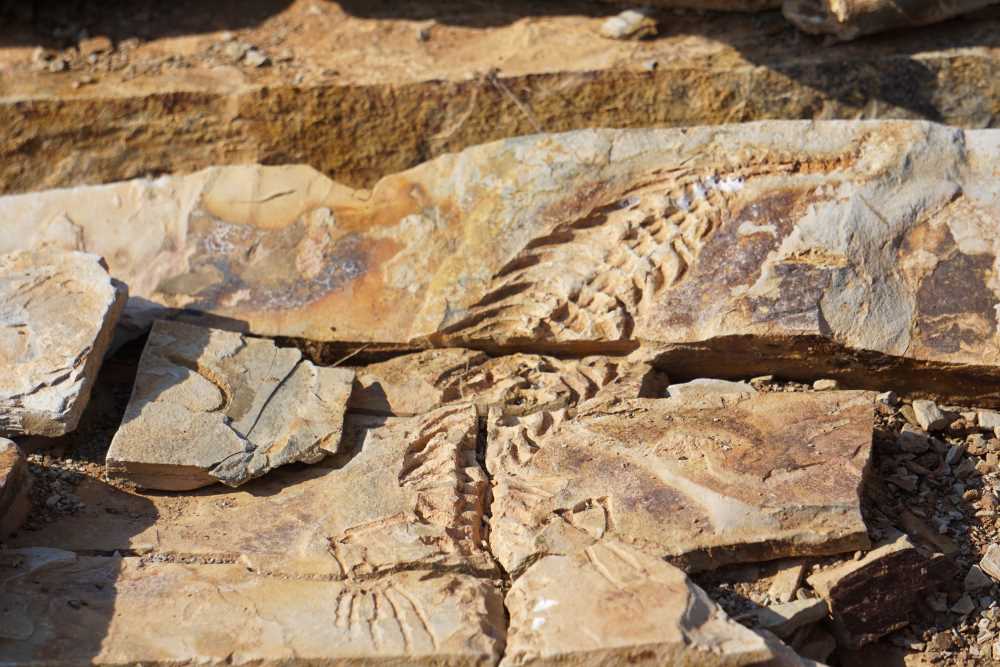
A little song on the dolorite xylophone
Besides the fossils, the tour offers other attractions. Since the farm is dotted with dolorite hills and quiver trees, of course, they also come into the spotlight. For example, one learns that dolorite is volcanic in origin and that the shape of the rocks formed purely through erosion. Without this knowledge, the theory of giants piling up the stones seems the next most reasonable option. The clear highlight to this fascinating dark rock is the music lesson. At one vantage point, time has created a dolorite xylophone. In a column, different sized pieces of the rock have eroded so that they are almost exposed. Due to the internal tension in the rock, sounds can be produced and even songs can be played.
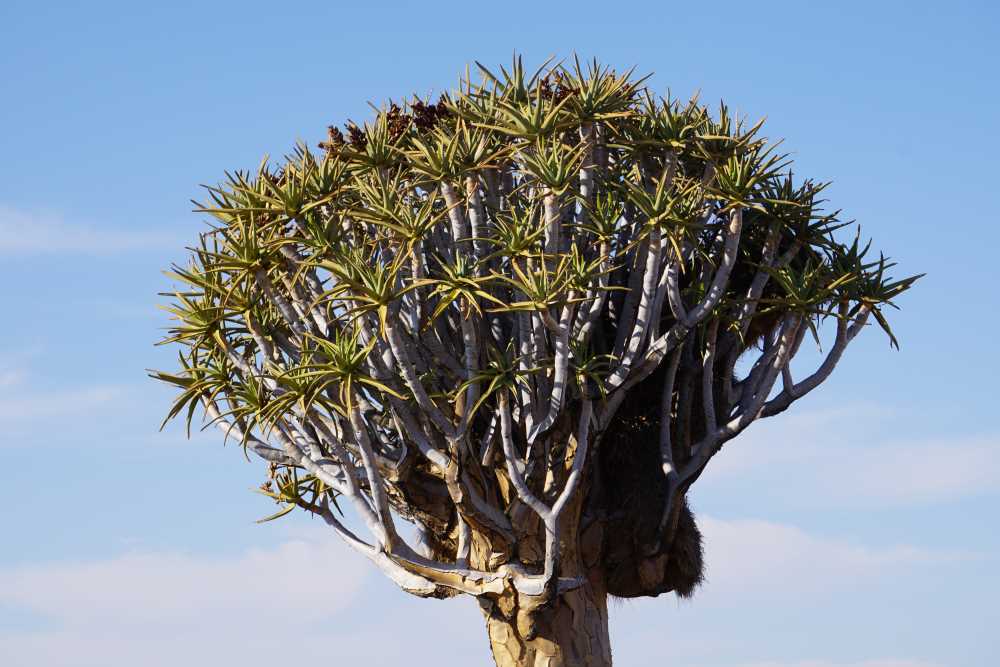
Quiver trees lesson for beginners
Quiver trees also want to be mentioned on Gil’s tour. These trees are a special form of the aloe plant that only occurs in southern Africa. They have proliferated in the dolorite rock in the region around Keetmanshoop. The leaves are reminiscent of the aloe. The sap in the plant also has similar effects. The trees get their characteristic shape from the fact that the branches always split into two more. The wood itself is extremely light and porous. Thus, the tree can absorb and store the water of the rainy season like a sponge.
And why are they called quiver trees now?
In fact, the structure of the plant has little to do with the name. This comes from the use of the plant by the ancient people of the Bushmen (San). They used the light and hollow branches of the tree to make their quivers. Since the material is quite stable despite its lightness, it was ideal for transporting hunting arrows.
Still not enough of quiver trees and dolorite rocks?
For those who have really tasted blood after the tour of Gil (Mesosaurus Fossil Site), it is recommended to get in the car again. With the newly acquired knowledge, you can enjoy the Quiver Tree Forest, as the densest contiguous collection of quiver trees, as well as the rock garden in the Giants Playground better and more purposefully. Admission for both is payable at the Quiver Tree Forest front desk. The areas can then be hiked and explored completely on your own. In addition, you can participate in the feeding of the cheetahs in the evening.
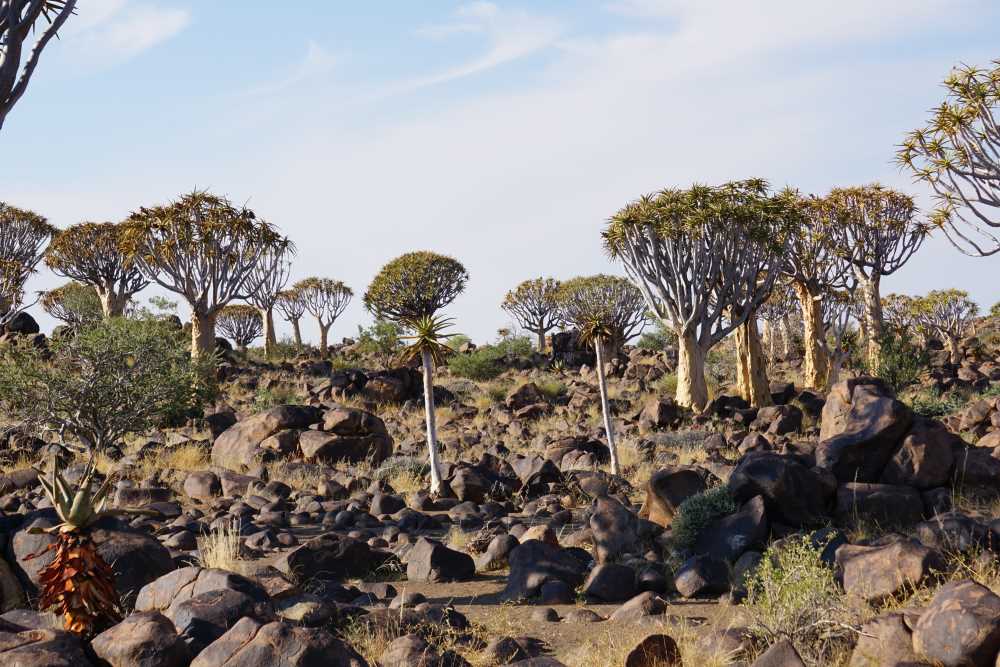
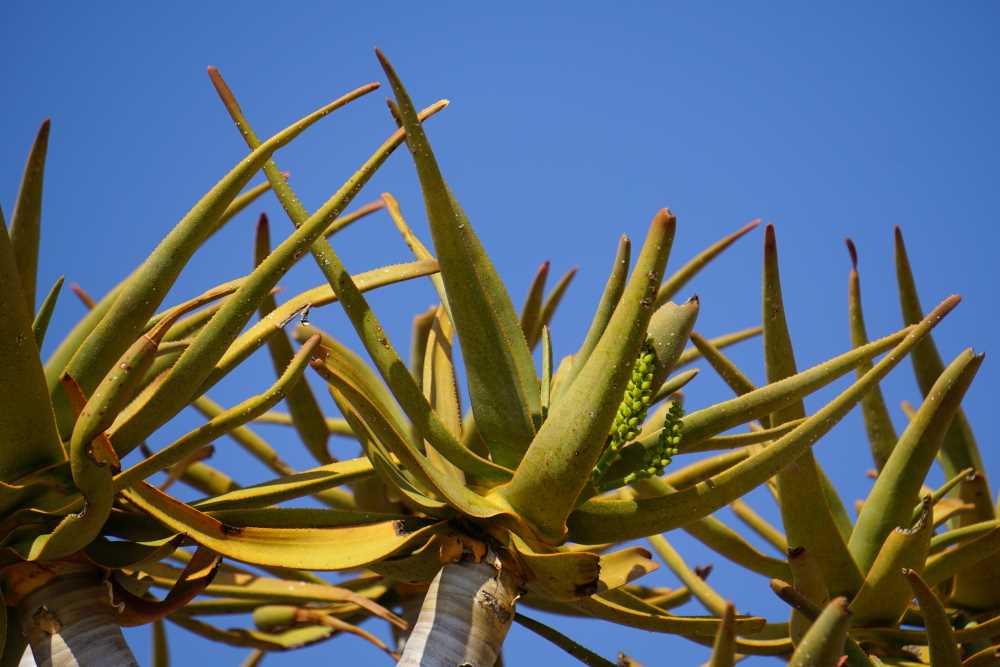
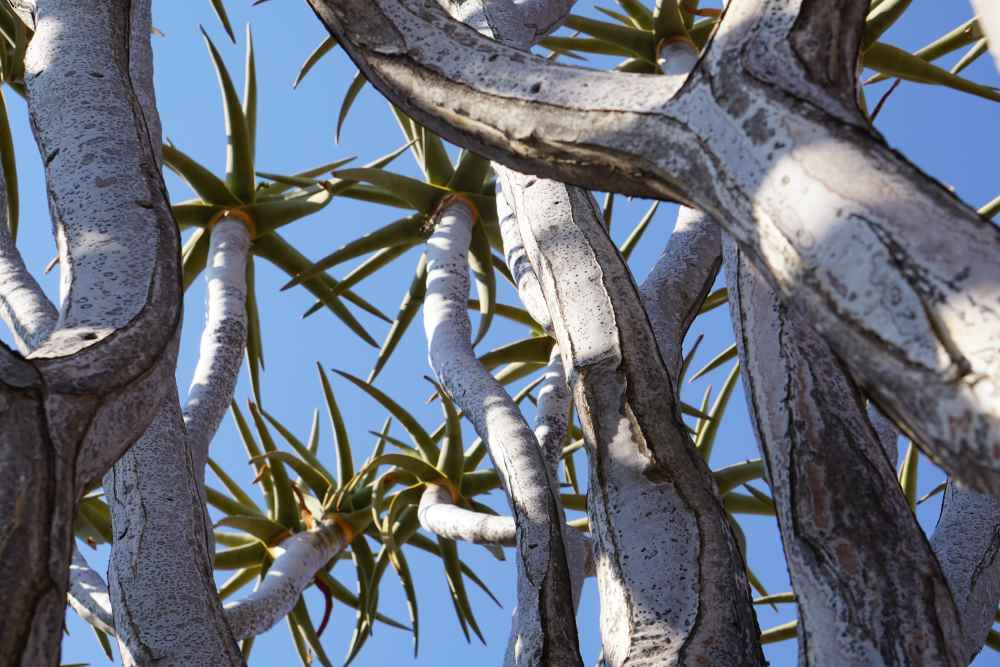
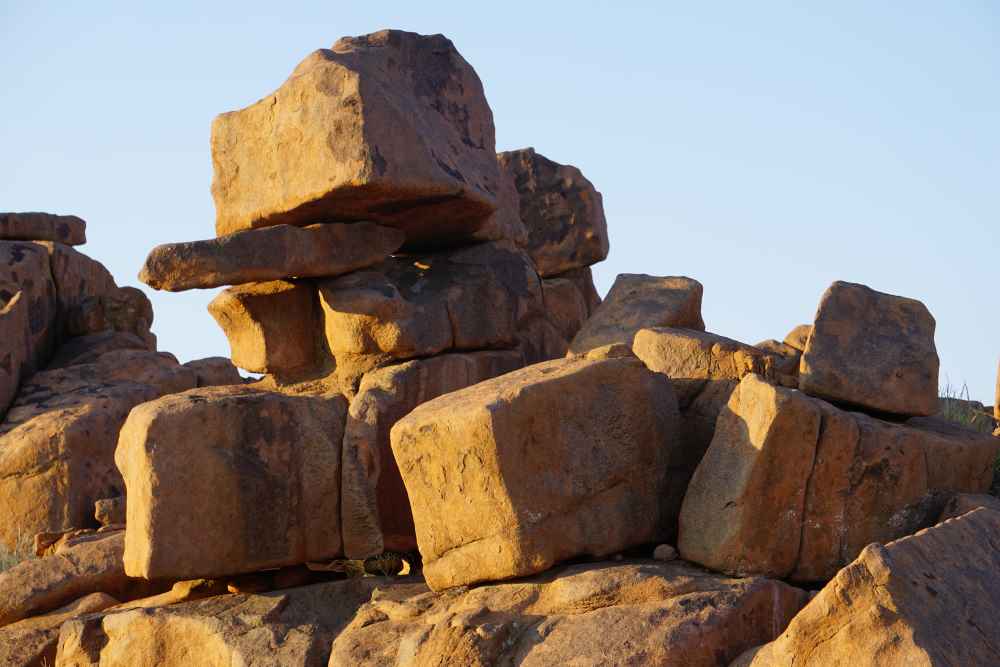
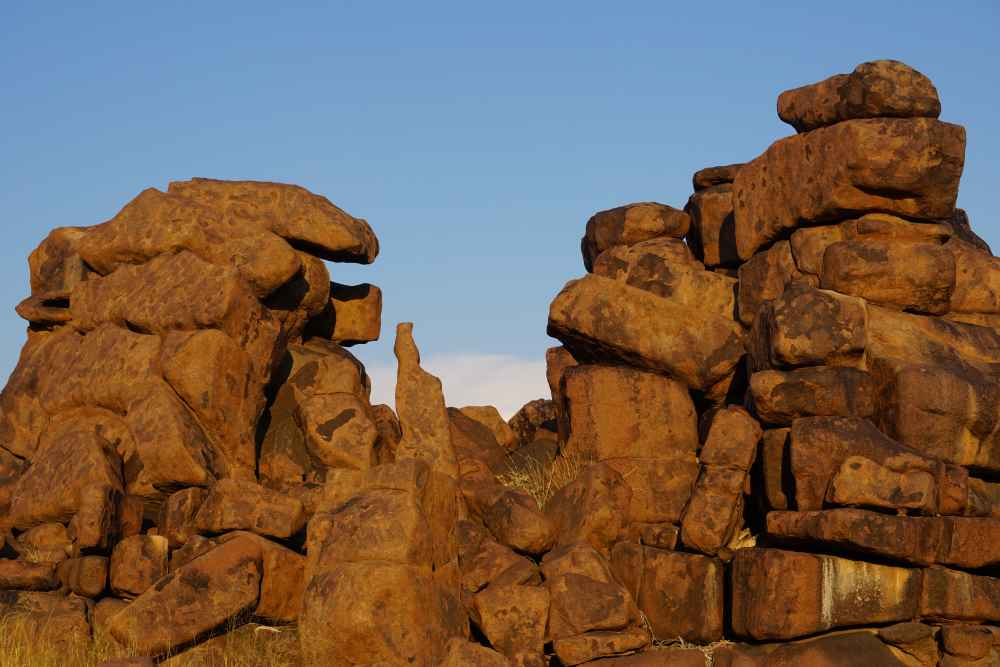
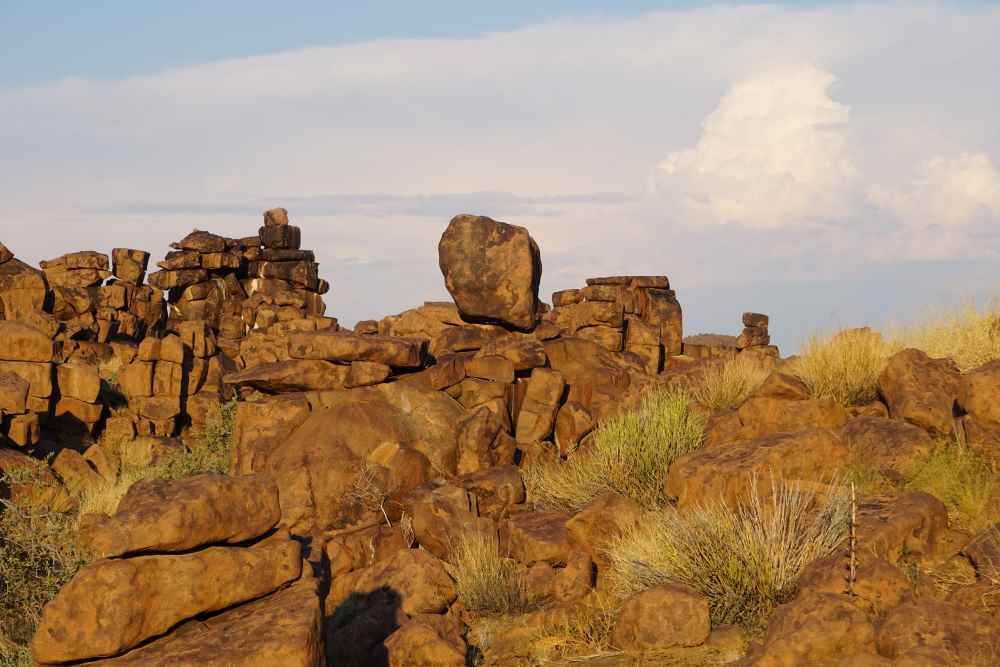
More posts related to the safari honeymoon
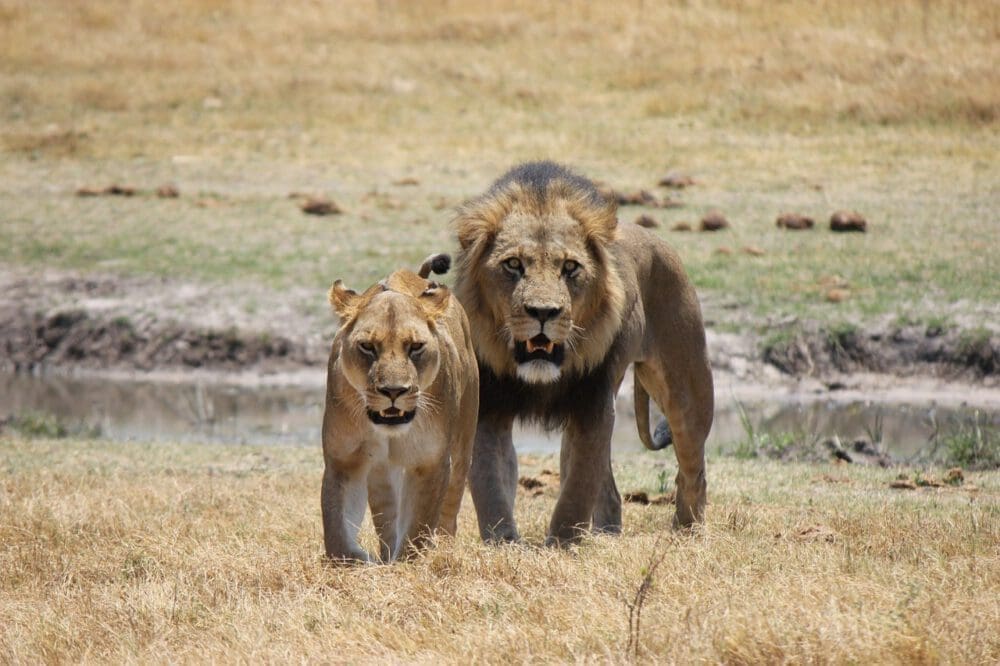
The great safari honeymoon to Namibia

Flying during COVID
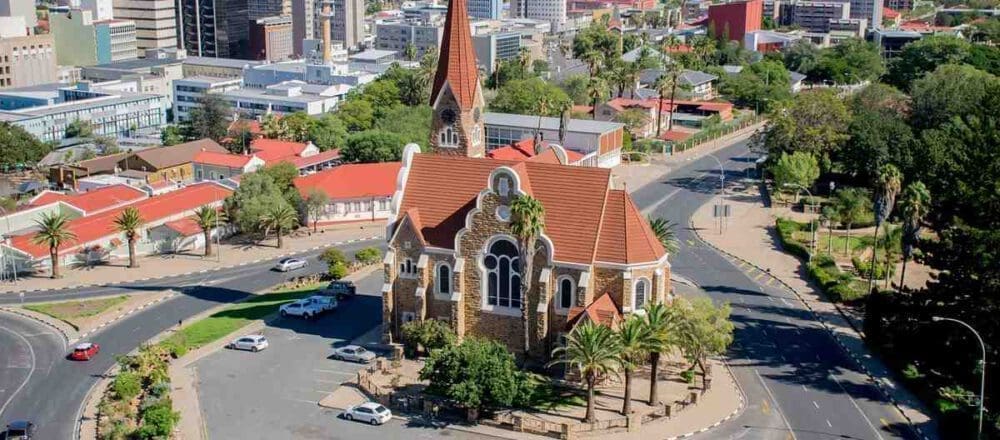
Windhoek – the first week of the trip
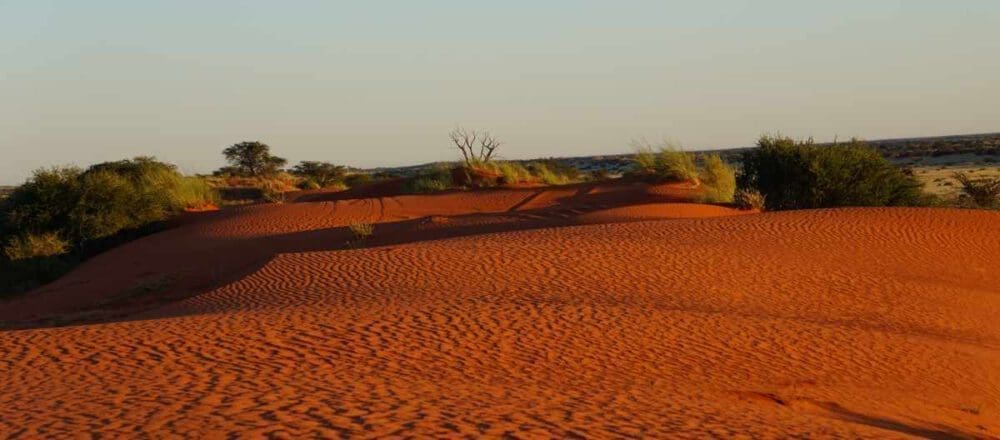
Let’s go to the Kalahari Desert!
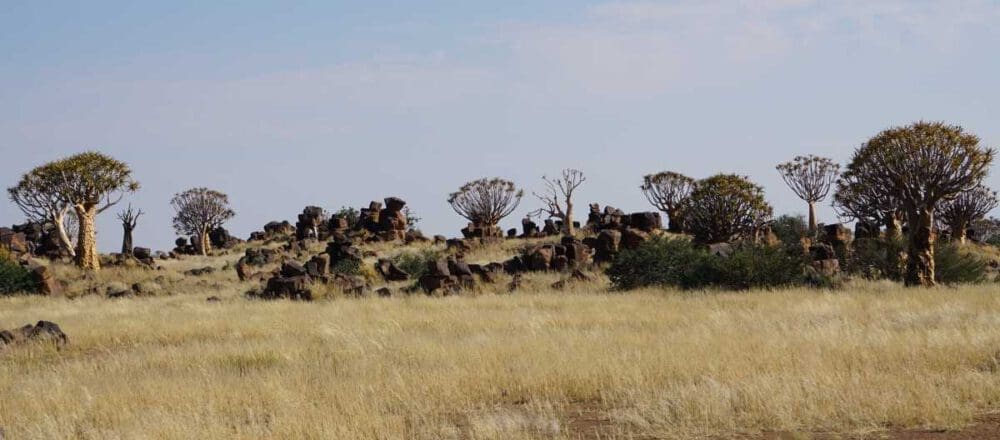
Quiver trees, rock formations and unknown fossils
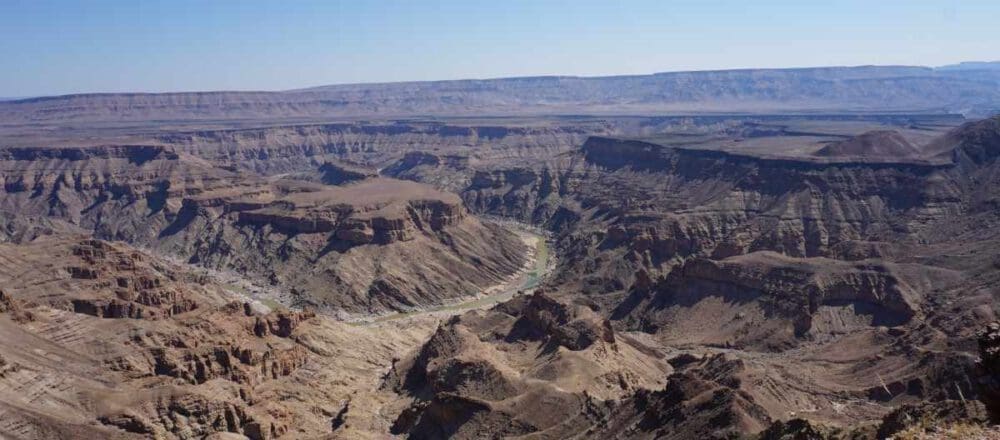
Fish River Canyon – still with water
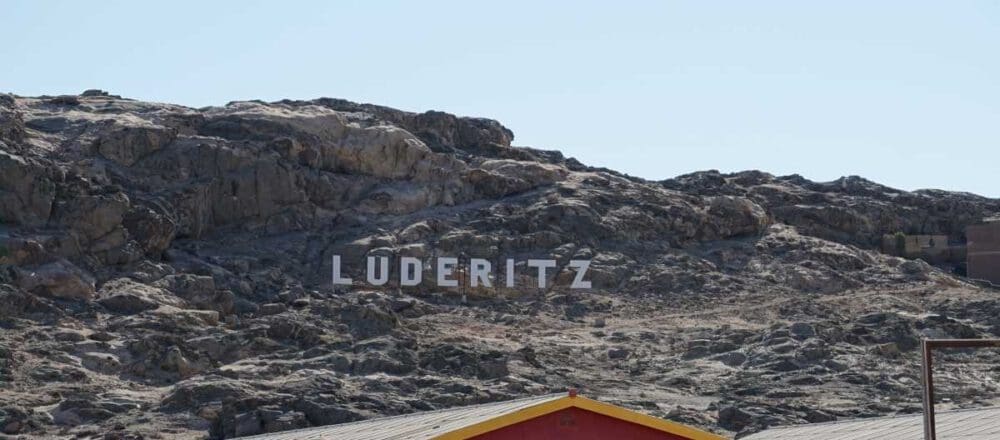
Luderitz and Sperrgebiet – Gin, Diamonds and Ghosts
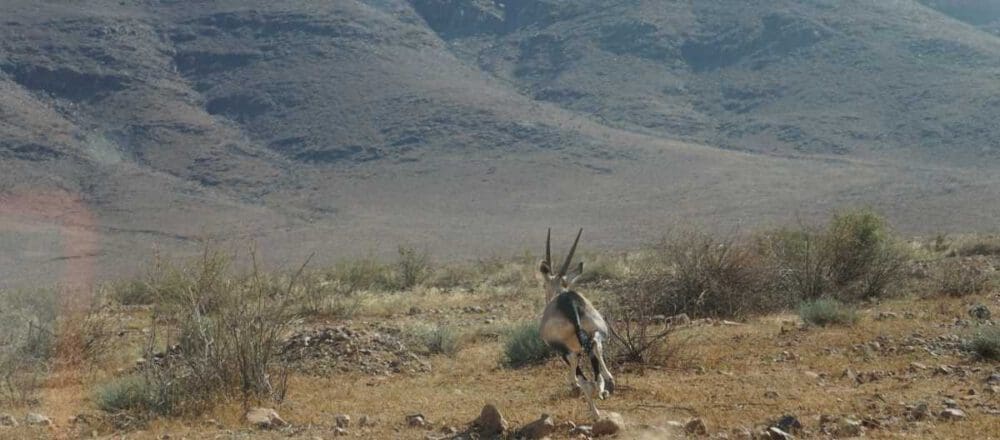
Unplanned stopover – Namibian gem
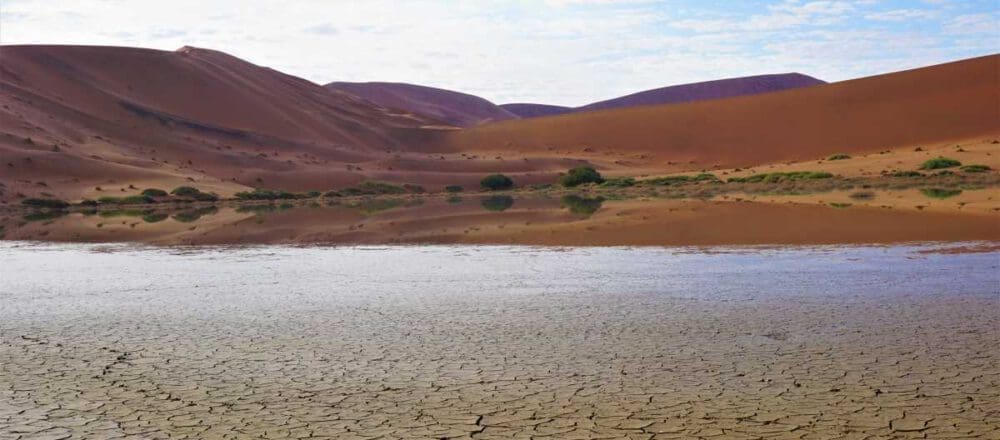
Water in the Namib – Sesriem and Sossusvlei
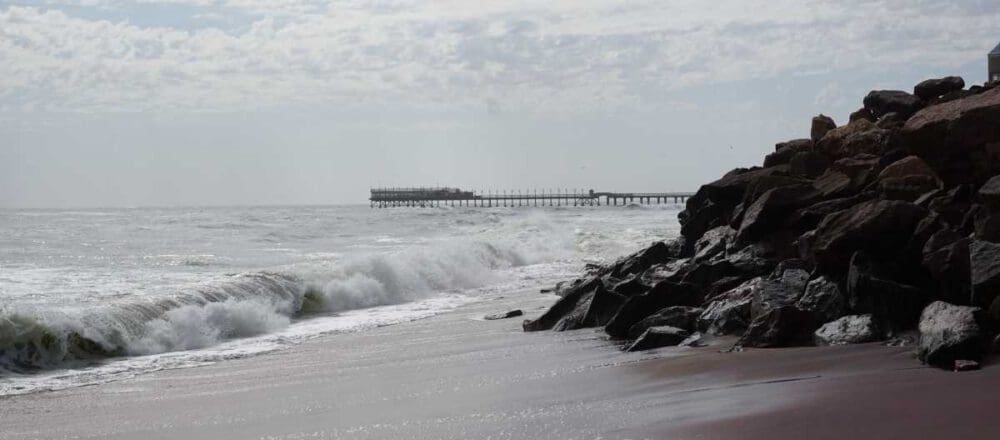
Swakopmund and surroundings
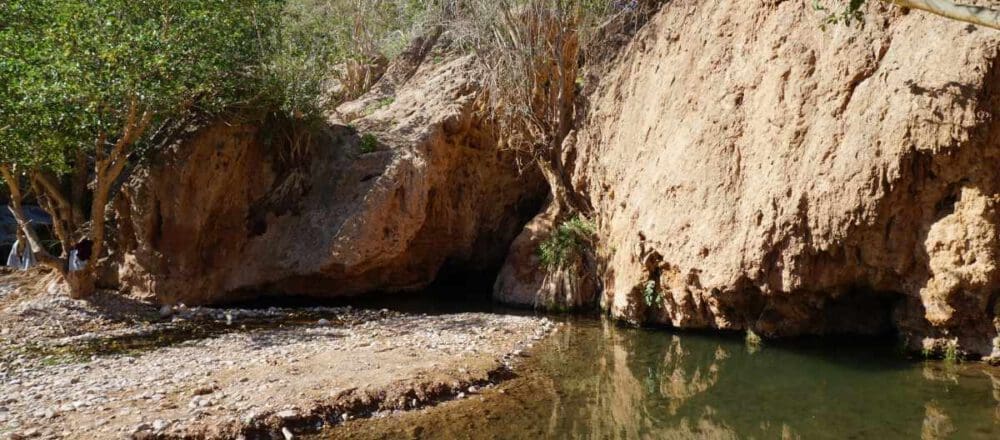
Warmquelle – refreshment at the Ongongo waterfall
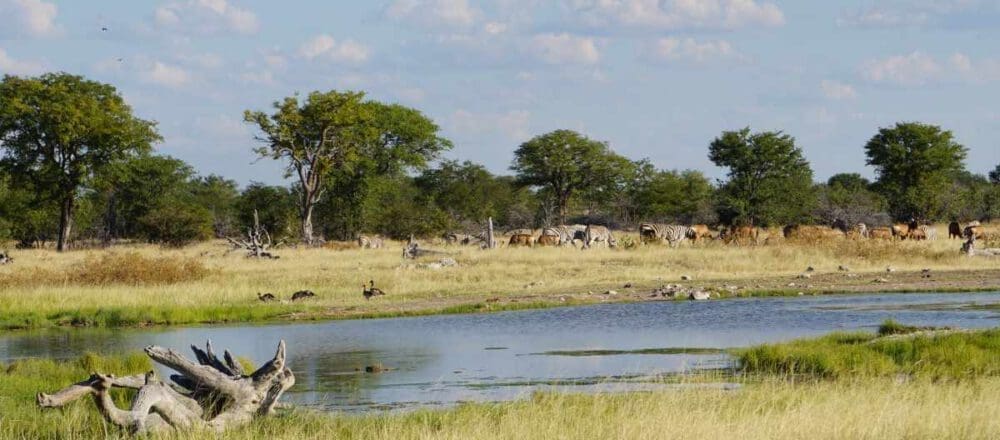
A week in Etosha National Park
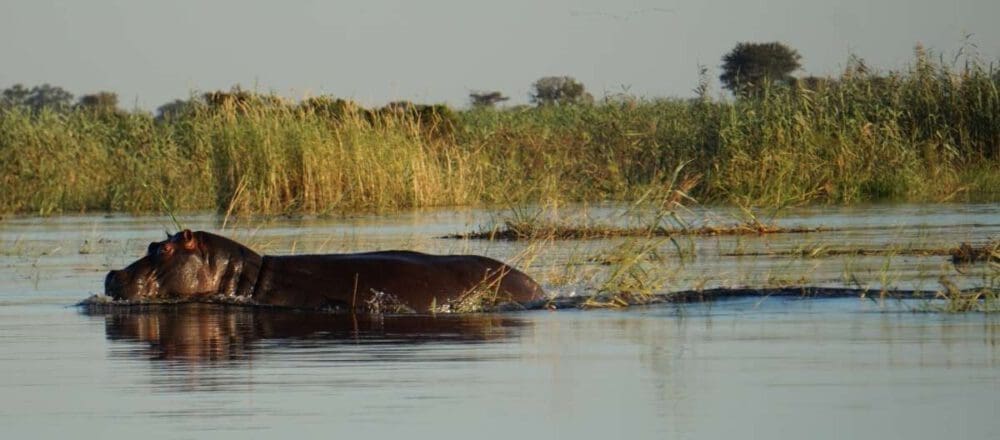
Kwando River – maximum relaxation in the Caprivi
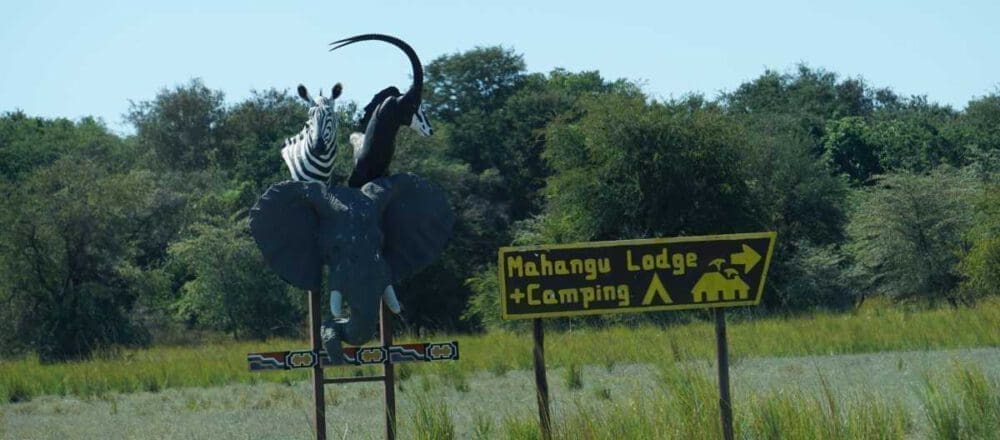
Okavango River – Lizards and gray giants in the water
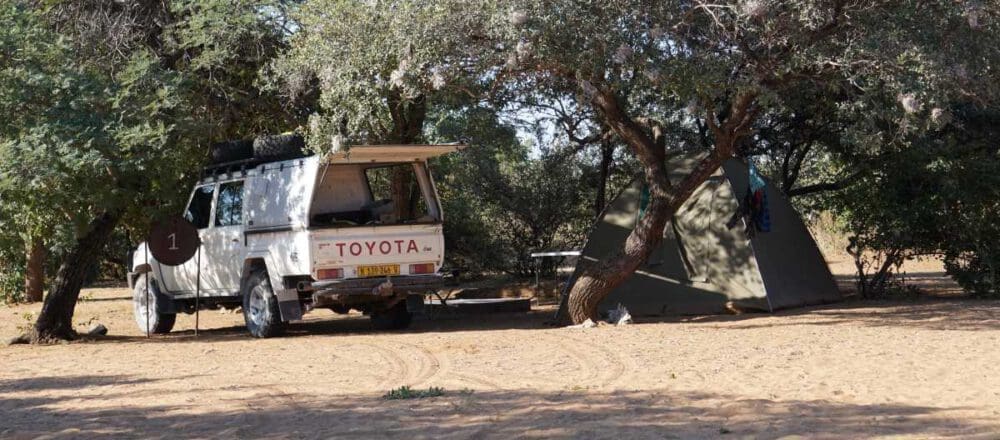
San People – Experience traditions and pure nature
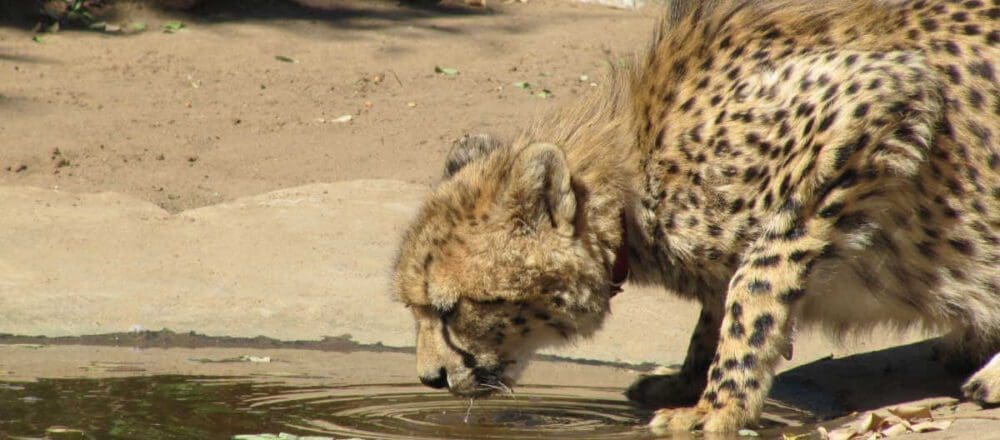
Harnas – Orphanage for wild animals
